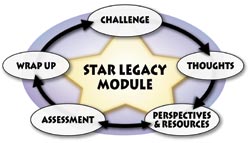
Among the 23 lively students in Miss Smith’s third-grade class (all names have been changed) are several children with disabilities: Katie, who has dyslexia; Billy, who experiences occasional seizures; John, who has attention deficit hyperactivity disorder, and several students with behavioral problems. Meeting the needs of all her students is no small task. Yet at no time during Miss Smith’s college education did she learn about teaching children with disabilities. She is not alone.
In 2008 more than 5.6 million students with disabilities spent a large part of each school day in the nation’s general public school classrooms. But while inclusive classes have improved the education of those students, they also present major challenges for classroom teachers, many of whom receive little or no training in special education during their college careers.
Now a center named for the iris, for many years a symbol of Peabody College, has received national recognition for educating classroom teachers about struggling learners and students with disabilities.
The IRIS Center (an acronym for IDEA’04 and Research for Inclusive Settings) provides free, Web-based, interactive instructional resources for college faculty and other professionals preparing the next generation of educators, says co-director Naomi C. Tyler, associate professor of the practice of special education. IRIS is also used by professional development providers who work with teachers and principals in school settings. Parents also use the site, which had more than one million visitors worldwide last year.
Mary Little, associate professor and coordinator of graduate programs on exceptional students at the University of Central Florida, calls IRIS “a fabulous resource.”
“We use the modules to build collaboration between special education and content faculty across our college of education,” she says.
We are bridging the gap between research and practice by translating the latest research into practical applications that make sense to classroom teachers.
—Naomi Tyler
Last November IRIS was singled out as an exemplary center at the 35th anniversary celebration of the Individuals with Disabilities Education Act (IDEA) in Washington, D.C. Over the past 10 years, IRIS has been awarded two multiyear grants totaling $11.1 million from the U.S. Department of Education. The center has also received nearly $1.1 million in contracts from several states to develop specific learning materials.
Founded at Peabody in 2001, IRIS has two additional sites: IRIS-West at Claremont Graduate University in California and IRIS-East in Washington, D.C. The Claremont site, directed by Deborah D. Smith, handles dissemination and training components, while Judy Smith Davis at IRIS-East provides liaison with professional groups.
At Peabody’s IRIS-Central, two faculty members, six full-time and two part-time staff members manage the website and develop all instructional materials. The website, which includes interactive modules, case studies, information briefs, activities, podcasts, instructors’ tips and other resources, can be accessed without a login or password. The site contains features such as closed-captioning, transcripts and audio descriptions to make it accessible to individuals with disabilities.
IRIS modules feature the Star Legacy cycle, an instructional tool based on the “How People Learn” framework developed by former Peabody professor John Bransford, who currently holds the Shauna C. Larson Chair of Learning Sciences at the University of Washington in Seattle, Daniel Schwartz, now at Stanford, and others.
The case-based modules provide information on instructional and behavioral interventions and contain videos, interactive activities, interviews with experts, demonstrations of interventions and suggested resources for further study. Sample topics include behavior and classroom management, school improvement, and reading, literacy and language arts.
“The complexity of the modules has improved over time,” Tyler says. “The level of interactive sophistication has definitely increased since the earlier modules. They contain more video, interactive activities and opportunities for feedback. The technology enables college students and professionals to learn through a variety of formats.”
For example, students can read about how to implement a particular instructional or behavioral strategy, listen to an interview with the researchers who validated that practice, watch a video of a teacher demonstrating the practice in a classroom setting, and then engage in an interactive activity to assess their knowledge about the practice.

Kimberly Paulsen, associate professor of the practice of special education at Peabody, uses IRIS in her undergraduate classes and with mentors who supervise Nashville-area student teachers.
“I present two or three modules to the class,” Paulsen explains. “Then I assign a review, have them answer the questions, and write a report on what they learned and how they would use that knowledge in the classroom.”
Kristen Wong, a paraprofessional at a suburban Atlanta elementary school, was introduced to IRIS while an undergraduate at Georgia State University. “I found the modules very helpful,” she says. “I have been able to apply the [module] on the acting-out cycle almost daily in the classroom.”
In addition to training future and current teachers, IRIS also highlights the work of Peabody researchers, who help the staff develop, review and field test the instructional materials.
“IRIS is situated in an ideal location to develop training materials on best practices because we get to collaborate with Peabody’s stellar faculty,” Tyler says. “We are bridging the gap between research and practice by translating the latest research into practical applications that make sense to classroom teachers.”
For more information about IRIS, please go to http://iris.peabody.vanderbilt.edu.